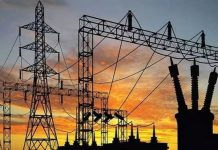By Ajmal Khan Yousafzai
Alarm bells start ringing as winters approach. Only this time, the gas shortage is likely to be much grimmer than the previous couple of years because the time has come when provinces other than Punjab too will become gas deficient and face load-shedding.
The current natural gas shortfall is expected to exacerbate in the coming months. Recent bout of load shedding in K-Electric’s system because of gas shortage is just a reminder of what is to be expected in winters. According to Oil and Gas Regulatory Authority, the gas demand and supply gap during FY2019 was 1.4 billion cubic feet per day (bcfd), which is expected to rise to 3.7 bcfd by FY2025 and 5.4 bcfd by FY203.
Predictions for the upcoming winters are as high as 1.5 bcfd by industry experts and stakeholders, while the government officials have been foretelling close to 800mmcfd shortage in the gas network. The Special Assistant to Prime Minister (SAPM) on Energy, Nadeem Babar on various occasions has highlighted that the SSGC network that serves Sindh and Balochistan is likely to face a higher shortfall this year than the SNGPL Network serving Punjab and KPK. SSGC network’ shortfall could touch 400mmcfd while SNGPL network will face a demand and supply gap of 350mmcfd.
The current gas demand in the country stands around 7.5 bcfd, while the indigenous production has come down to only 3.5 bcfd. Gas production is declining at a rate of 9.5 percent annually, and the notorious circular debt has also engulfed the gas sector, touching Rs250 billion. This means that to increase the supply side, a lot of reliance will be on imported RLNG. Here too the federal government Sindh government are at loggerheads as the latter is not ready to consume LNG and hence does not agree on the weighted average gas pricing proposal by the federal government as it will increase the price. On the other hand, the federal government has proposed an additional 150 mmcfd in form of RLNG to Sindh if it issues the right of way for an additional gas pipeline.
The government is also planning to build underground gas storage to avert a gas shortage in the future. For this, the Asian Development Bank has agreed to complete a study on the methodology of underground gas storages till May 2021. But some measures are required immediately. Apart from the consensus between provinces and the federation needed to address gas shortfall issues, what is needed instantly is 100 percent utilization of the two RLNG terminals, and increased LPG production and lowering its cost for those without piped gas (28 percent of gas consumers) as well as those with piped gas but facing a shortage in winter months.






